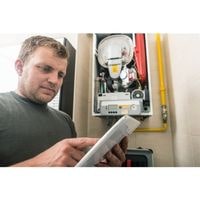Coleman furnace blower motor problems. Coleman Company, a leading manufacturer of heating and cooling products, traces its origins back to 1923.
The comprehensive Coleman furnace repair guide below will help you troubleshoot any issues that your furnace might be experiencing, such as poor airflow or humming sounds.
An important tip to remember is to maintain the internal components of your furnace which ensures that vital components can function at their best for long-term success.
Coleman furnace blower motor problems

Although this Coleman repair guide will help you solve the most common problems that your unit may encounter,
It’s always a good idea to speak with a professional HVAC technician when complex problems arise.
If your furnace stops producing enough heat or is leaking or dripping,
you should contact a trained professional immediately. These issues are typically due to internal component failure.
Replace the blower motor
The blower assembly blows air through a series of hoses and tubes from the outdoor unit to its frame.
There are several components that may fail during this process depending on the issue encountered during operation.
To start, make sure that power is being supplied to the blower motor by testing for continuity across both terminals of the motor using a multimeter when it should be buzzing.
If the blower motor fails to run but has power applied, check for a broken wire or loose connection within the wiring harness.
If there doesn’t seem to be anything faulty in regards to how it is wired up, you might need to replace the blower itself immediately since it seems as though there is an issue with how freely it spins due to what seems like friction caused by a build-up of dirt or gunk.
Incoming Power issue
Make sure the furnace is receiving power. If the furnace is not getting power, check the furnace circuit breaker. If it’s out of order, switch it off and on again to start up your system.
Defective Capacitor
If the capacitor is defective, it could cause a few issues. A noisy, overheated, or non-functioning fan motor could result. Inspect the capacitor to determine if it has failed.
Replace a bulging or leaking capacitor. If the capacitor fails, you can check it with a multimeter. If a fan motor begins to run slow, check the capacitors first: they may be failing.
Faulty Control Board
The power supply to the furnace’s various components is regulated by the control board. If this is defective, it might not send voltage to things like the blower motor.
Do you know when it is time to replace your blower motor?
In addition to the sound you’re used to from your furnace, there are some signs that something might be wrong, especially if you notice a change or increase in the existing sounds coming from the blower motor.
For example, increased buzzing or the louder whirring of noises, as well as any change in pitch, should raise a red flag.
Excessive squealing could also potentially indicate a problem and so can smells of burning. In this case, it’s always best to pull over immediately to figure out what’s going on.
Related Guides
